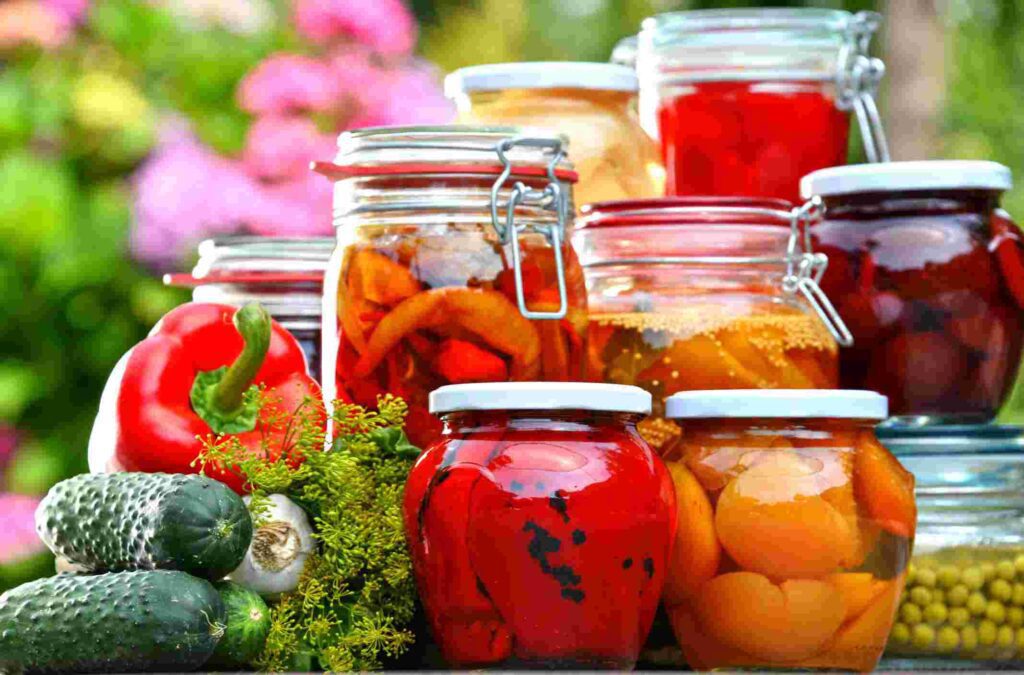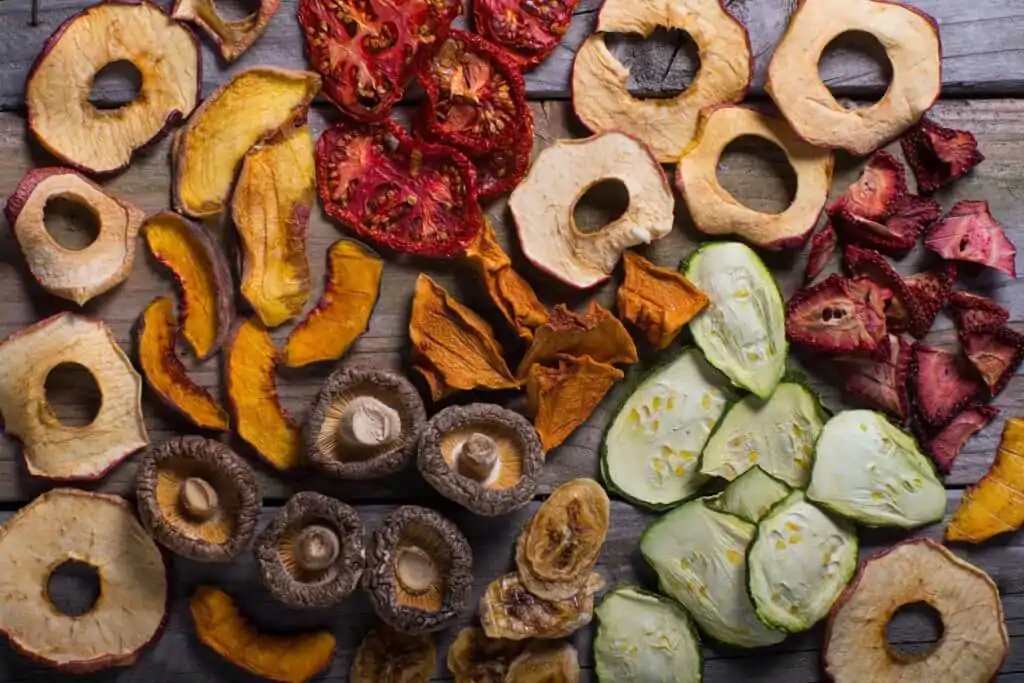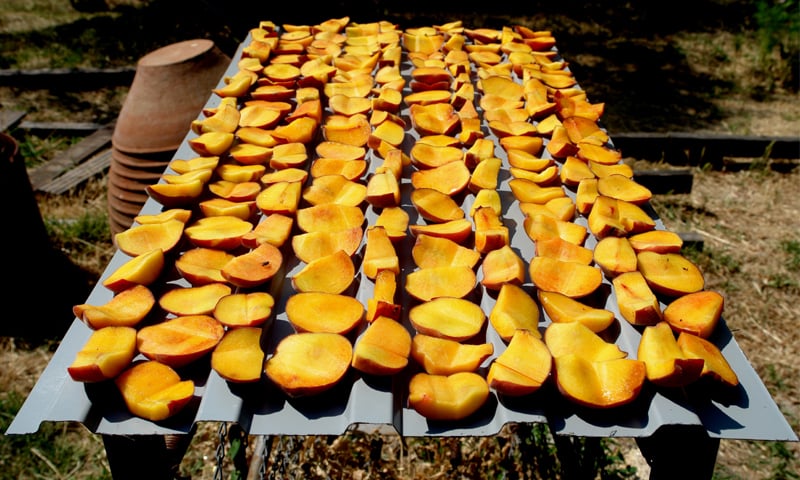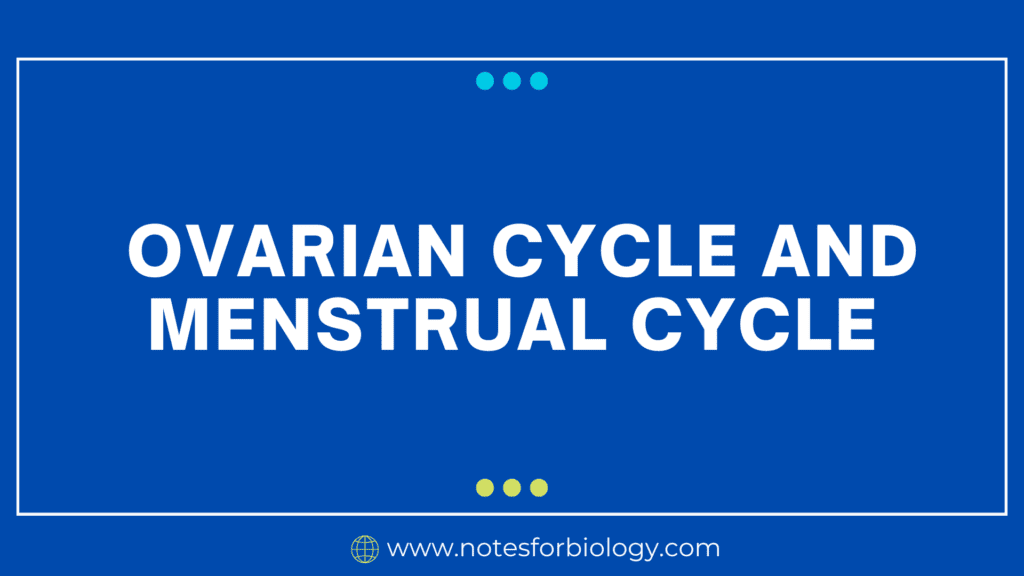Introduction
Food is a fundamental necessity of life, and preserving it for long-term use has been one of humanity’s oldest and most practical skills. One of the simplest and most ancient methods of food preservation is drying. From sun-dried fruits in ancient civilizations to modern freeze-dried meals for astronauts, drying plays a vital role in keeping food safe, reducing spoilage, and enhancing shelf life.

Drying removes moisture from food, which is essential because water is a key factor in microbial growth. Bacteria, yeasts, and molds need water to grow and spoil food. By reducing water content, drying creates an environment where these organisms cannot thrive. The result is food that can last weeks, months, or even years without refrigeration.
In this comprehensive guide, we will explore the drying method of food preservation, its principles, types, examples, benefits, and modern advancements. The information is presented in a simple, clear, and humanized form to help everyone—from students to professionals—understand this valuable technique.
Table of Contents
What is Drying in Food Preservation?
Drying is the process of removing water or moisture from food by applying heat or exposing it to air. When food is dried, the moisture content is reduced to a level that inhibits the growth of spoilage-causing microorganisms and enzymatic reactions. This makes the food more stable and safe for storage over long periods.

In its simplest form, drying can involve leaving food in the sun or wind. In advanced settings, specialized machines and controlled environments are used to remove water efficiently while retaining flavor, color, texture, and nutrients.
Principle of Drying
The basic principle of drying food is to remove water from the surface and inner tissues by:
- Applying heat (sun, hot air, microwaves, etc.)
- Allowing water to evaporate from the food
- Preventing reabsorption of moisture during and after drying
Drying reduces water activity (aw)—the amount of water available for microbial growth. When water activity drops below a certain threshold (usually 0.6), most microorganisms cannot survive or multiply, making the food shelf-stable.
Advantages of Drying as a Food Preservation Method
- Increases shelf life without the need for refrigeration
- Reduces weight and volume, making storage and transport easier
- Retains most of the nutrients, especially when done properly
- Preserves natural flavors and enhances taste in some foods
- Environmentally friendly compared to freezing or canning
- Economical and simple for home or large-scale use
Disadvantages of Drying
- Some nutrient loss, especially heat-sensitive vitamins (like vitamin C)
- Texture changes, making food hard or brittle
- Rehydration may not fully restore the original form of food
- Improper drying can lead to spoilage or insect infestation
- Energy-intensive if using electric or industrial dryers
Types of Drying Methods of Food Preservation
Different types of drying methods are used depending on the type of food, desired quality, equipment availability, and cost. Below are the main types, along with explanations and examples.
1. Sun Drying (Natural Drying)
Definition:
A traditional and natural method where food is dried by exposing it to direct sunlight.

Process:
- Food is placed on trays, mats, or screens in open areas
- Sunlight and air remove moisture over days
Examples:
- Sun-dried tomatoes
- Raisins from grapes
- Dried chilies
- Dried fish
Advantages:
- Low cost
- Environmentally friendly
Disadvantages:
- Weather dependent
- Risk of contamination by dust, insects, or animals
- Uneven drying in humid climates
2. Shade Drying
Definition:
Drying food in a shaded, well-ventilated area to protect color-sensitive foods from sunlight.
Examples:
- Green herbs (basil, mint, coriander)
- Flowers for teas or medicinal use
Advantages:
- Preserves color and aroma
- Simple and cost-effective
Disadvantages:
- Slower process
- May not be suitable for moist or thick items
3. Air Drying (Hot Air or Convection Drying)
Definition:
Drying food using controlled hot air in a cabinet or tunnel dryer.
Process:
- Food is placed on trays inside a chamber
- Hot air is circulated to remove moisture
Examples:
- Dehydrated vegetables (carrots, onions)
- Apple chips
- Beef jerky
Advantages:
- Faster and more controlled than sun drying
- Can be used in all weather conditions
Disadvantages:
- Energy cost involved
- Some nutrient and flavor loss due to high heat
4. Freeze Drying (Lyophilization)
Definition:
An advanced method that removes water by freezing the food and then reducing the surrounding pressure to allow sublimation (ice turns into vapor).
Process:
- Food is frozen
- Placed in a vacuum chamber
- Water sublimates, leaving behind dry food
Examples:
- Instant coffee
- Astronaut meals
- Dried strawberries in cereals
- Medicinal herbs
Advantages:
- Preserves shape, texture, color, and nutrients
- Very long shelf life
- Rehydrates well
Disadvantages:
- Expensive equipment
- High operational cost
- Not practical for home use
5. Vacuum Drying
Definition:
Drying food in a vacuum chamber at reduced pressure and lower temperatures.
Examples:
- Instant soups
- Pharmaceuticals
- Heat-sensitive fruit powders
Advantages:
- Preserves heat-sensitive nutrients
- Retains aroma and flavor
Disadvantages:
- Equipment cost is high
- Not suitable for large-scale dehydration
6. Drum Drying
Definition:
Spreading food puree or slurry on the surface of heated rotating drums and scraping it off as a dry sheet.
Examples:
- Instant mashed potatoes
- Baby foods
- Fruit flakes
Advantages:
- Fast drying
- Economical for certain products
Disadvantages:
- Texture loss
- Nutrient degradation at high temperatures
7. Spray Drying
Definition:
Drying liquid foods by spraying them into a chamber of hot air, where droplets quickly dry into powder.
Examples:
- Milk powder
- Egg powder
- Coffee creamer
- Flavorings
Advantages:
- Rapid process
- Suitable for liquids and emulsions
Disadvantages:
- High cost
- Not suitable for solid foods
8. Microwave Drying
Definition:
Using microwave energy to remove moisture quickly from the inside of food.
Examples:
- Microwaveable snacks
- Spiced or flavored dried fruits
- Instant noodle toppings
Advantages:
- Fast and energy-efficient
- Good for thick or uneven foods
Disadvantages:
- Risk of overheating or burning
- Uneven drying if not controlled
9. Osmotic Dehydration
Definition:
Pre-drying treatment where food is soaked in a concentrated sugar or salt solution to remove water before further drying.
Examples:
- Candied fruits
- Pickled mango slices before drying
Advantages:
- Improves texture and flavor
- Reduces energy needed in later drying steps
Disadvantages:
- Requires additional preparation steps
- Increases sugar/salt content
10. Hybrid or Combination Drying
Definition:
Combining two or more drying techniques to optimize quality and reduce drying time.
Examples:
- Microwave + hot air
- Osmotic + freeze drying
Advantages:
- Better product quality
- Energy savings
Disadvantages:
More complex equipment and control needed
Examples of Common Dried Foods
Fruits
- Apples (dried rings, chips)
- Bananas (banana chips)
- Mangoes (dried mango)
- Grapes (raisins)
- Berries (cranberries, blueberries)
Vegetables
- Carrots
- Onions
- Spinach
- Potatoes
- Tomatoes (sun-dried)
Meats and Fish
- Beef jerky
- Dried shrimp
- Salted cod
- Dried sausages
Dairy
- Milk powder
- Cheese powder
Cereals and Legumes
- Rice flakes
- Lentil snacks
- Instant oats
Herbs and Spices
- Basil, oregano, mint
- Dried chili
- Garlic powder
- Ginger flakes
Nutritional Changes During Drying
Drying preserves most macronutrients like carbohydrates, proteins, and fats. However, some vitamins and antioxidants may degrade, especially with high heat.
- Vitamin C: Very heat-sensitive; reduced during drying
- Vitamin A and E: Fat-soluble vitamins; moderately stable
- Minerals: Largely retained
- Fiber: Unaffected
Modern techniques like freeze drying help preserve most of the nutrients, color, and flavor.
Storage of Dried Foods
For dried foods to remain safe and tasty, proper storage is essential.
Storage Guidelines
- Store in airtight containers
- Keep in a cool, dry, and dark place
- Avoid exposure to moisture or humidity
- Use oxygen absorbers for long-term storage
- Vacuum seal for extended shelf life
Shelf Life Estimates
- Sun-dried fruits: 6–12 months
- Freeze-dried foods: 2–25 years (if sealed)
- Vegetable powders: 1–2 years
- Herbs and spices: 1–3 years
Industrial Applications of Drying
- Food processing plants use drying for bulk production
- Emergency rations and military food rely on drying for long shelf life
- Space food uses freeze drying for light weight and nutrient preservation
- Snack industries use hot air and microwave drying for chips, puffs, and instant meals
- Baby food and medical diets often use spray or vacuum-dried ingredients
Modern Innovations in Drying
- Solar dryers: Advanced sun-drying systems with improved hygiene
- Intelligent drying systems: Automated sensors to control temperature and moisture
- Infrared and radiofrequency drying: Faster drying with better quality retention
- 3D food printing using dehydrated powders
These technologies aim to improve drying efficiency while Food Preservation by preserving nutrients, taste, and color.
Conclusion
Drying is one of the most practical, versatile, and accessible methods of food preservation. From simple sun drying to high-tech freeze drying, the core idea remains the same removing moisture to keep food safe, tasty, and stable for long periods.
Whether drying fruits at home or creating instant food for astronauts, this age-old technique continues to evolve with new technologies. Understanding the types, methods, benefits, and limitations of drying helps us make better choices in food storage, nutrition, and sustainability.
By mastering drying, we not only reduce food waste and costs but also enjoy seasonal foods all year round—crispy apple chips, sun-dried tomatoes, or a warm bowl of instant soup on a cold night. It is the best way of food preservation.
Three Key Summary of drying method of Food Preservation
- Drying preserves food by removing moisture, preventing microbial growth and spoilage.
- Different drying methods (sun drying, freeze drying, spray drying, etc.) suit different types of food and desired outcomes.
- Proper storage of dried foods ensures long shelf life and maintains taste, safety, and nutritional value.
Frequently Asked Questions
What is the difference between drying and dehydration?
They are often used interchangeably, but dehydration typically refers to artificial drying using equipment, while drying may include both natural and mechanical methods.
Can I dry food at home without a dehydrator?
Yes. You can sun dry, air dry, or use a conventional oven on low heat. Just ensure good airflow, hygiene, and proper storage.
Is dried food healthy?
Yes, if dried properly, it retains most nutrients. However, some commercial dried foods may have added sugar, salt, or preservatives, so it’s best to check labels or dry your own.
Related Articles




